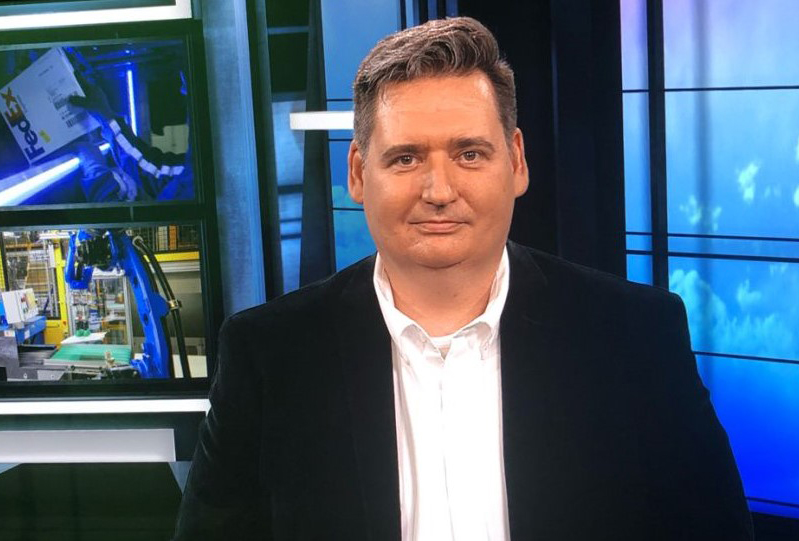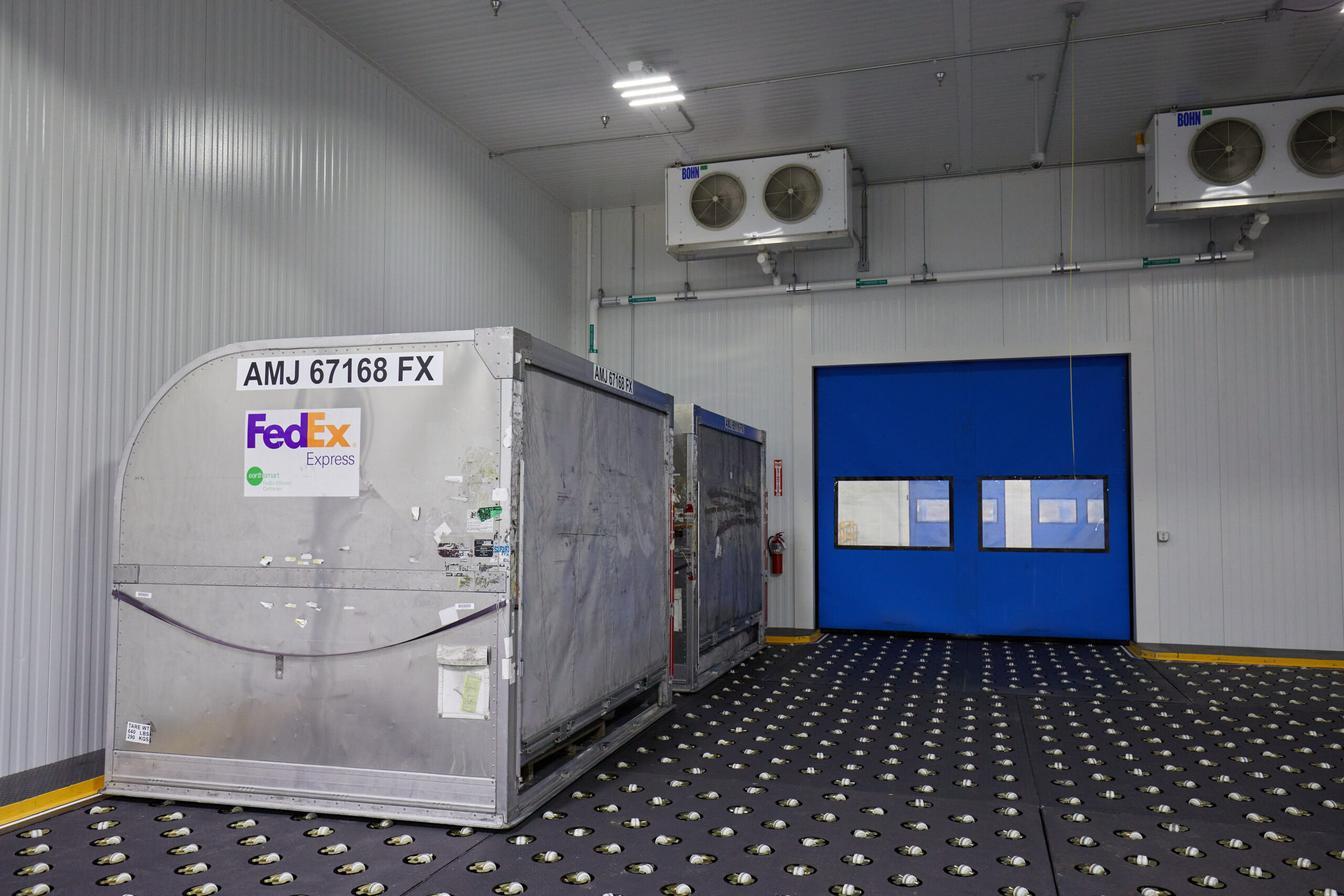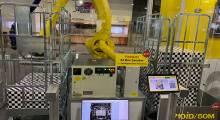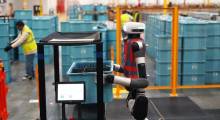Robotics 24/7 is a new resource from Peerless Media serving developers, systems integrators, and operations managers across the robotics ecosystem. Its primary focus is on applications in the supply chain, logistics, and manufacturing sectors, with the goal of representing end users as much as technologists.
“The more voices we have out there, the better,” said Aaron Prather, senior technical advisor and research and development evangelist at FedEx Express. Prather is a longtime proponent of practical automation, and he discussed the difference between provider expectations and industry needs.
“There are a lot of sensational things out there, such as a shelf-climbing robot, which people have sent me so many times [on social media],” he told Robotics 24/7. “It seems like a lot of tech to pick one box, when a guy on a scissor lift could pull multiple orders much faster.”
“I don't see how OSHA would sign off on this, since it isn't operating where no human might get in,” Prather added, referring to safety and productivity concerns. “You have to plan for the human element. You can always tell the newbies coming out of colleges that want to get into the industry. We like your enthusiasm, but you still have to be grounded in reality.”
Augmenting human capabilities as the goal for automation
“We're seeing success with companies such as 6 River Systems, Locus Robotics, and Plus One Robotics that are looking at humans and robots working as a team,” Prather said. “Folks who want to make the huge leap [to fully autonomous operations] won't get very far.”

Many vendors wanted to be “one-stop shops” for robots, but that oversimplified the needs of manufacturers and logistics providers such as FedEx, he observed.
“Early on, there was the image—'You'll only buy robots from us'—but you only have so many resources, so much time,” said Prather. “They didn't understand scale of where users want to take things. At FedEx, we need to take objects from small to big, and this may include two to four different robots.”
“We also need to clean our facilities and maintain security,” he said. “If we're going to layer and automate these tasks, which were done by people with specific skill sets, we need them to be in synch. That's where interoperability comes into play. We need tools as end users so that all these tasks come together as an orchestra. I've been trying to explain this to vendors and am starting to see more buy-in.”
Robotics 24/7 will be covering interoperability efforts such as the Robot Industries Association (RIA) Interoperability Task Force, MassRobotics' Autonomous Mobile Robot (AMR) Interoperability Working Group, and the Robot Operations Group.
Surviving coronavirus disruptions and avoiding vendor lock-in
Although automotive manufacturing, one of the biggest users of industrial automation, experienced a slowdown last year because of U.S. trade disputes with China and supply chain disruptions from the COVID-19 pandemic, many e-commerce and logistics providers have described an acceleration of demand. Increases that were predicted for five years coincided first with staffing shortages and then the need for social distancing.
“A lot has changed in the past year,” acknowledged Prather. “The pandemic may have brought attention to end users on how to do this. Do you want to be the last holdout for automation?”
“Where is your industry in this journey?” he asked. “Manufacturing is even further ahead than my industry—they see how this is going to play out.”
The need to coordinate multiple robots and people has led to some large users to say that if the vendors won't do it, they will look elsewhere or do it themselves.
“At one of the first RIA meetings I attended, automakers were wondering how to bring in AMRs if they were limited to one manufacturer,” Prather said. “What if you lose your FANUC programmer; how can you get things going again? FedEx is in the same boat if we don't address this.”
“Robotics is like a swimming pool—manufacturing is in the deep end, 3PLs [third-party logistics providers] are getting to deeper areas, and retail has only its ankles in the water,” Prather said. “The good thing is, with two big industries already in it, retail will be fine.”
Robotics is like a swimming pool—manufacturing is in the deep end, 3PLs are getting to deeper areas, and retail has only its ankles in the water.
He reiterated the importance of safety, particularly in public-facing environments. “If an inventory-scanning robot hits an employee stacking a shelf, that's an OSHA call, but what happens if it hits Grandma?” said Prather. “It's one of the big concerns for retail end users.”
Still, despite different use cases, adoption by multiple industries could lead to more direction for developers. “What do we want out of the technologies? My needs in a FedEx operation are different than what manufacturers or retailers may want, but we use similar mobile robots,” Prather said. “We can flip the script from robotics manufacturers just trying to sell stuff.”
Postpandemic plans and listening to users
As vaccinations begin to be distributed, there is hope for economic recovery, as well as uncertainty on which business and consumer behaviors are permanently changed. This will affect workforce availability, e-commerce, and the demand for automation.
“There will be a reassessment period as people return to work, and we'll see unemployment return to record lows. We're still projecting that shipping volumes will continue to grow, but our workforce is going to continue to stay steady at best,” said Prather. “We're still looking at a silvering of the workforce. Just our couriers bringing packages are continuing to get older, and it's a hard sell to get younger folks to take up those jobs.”
“We still have a lot of plans for automating, even if the growth in e-commerce slows,” he said. “We're looking at automating more of our network, but we'll be very strategic in where we do it.”
Even as adoption grows, the difference between success and failure for robotics providers will depend on how well they listen to their customers, said Prather. “The pie will continue to grow for everybody, especially those firms that have products we want, but we'll see some failures in the coming years where a product wasn't there yet or a company was crushed by a competitor.”
“I heard this analogy from an engineering manager: 'If my problem is the sum of 8, you can give me 2 and 4 and 2, or 3 and 5, but don't give me something that adds up to 13. If I have to do five other things to take on your solution, I don't want it,'” Prather said. “Don't give me something that creates more problems than it solves. I'd rather have a solution that gets me halfway there, and then we'll figure out the rest.”
“We still have too many startups building something that doesn't solve a problem,” he said. “If you want logistics firms to walk away from your sales pitch, tell them to change their system form to make your solution work.”
Accelerators can help robotics startups with customer discovery and identifying pain points, Prather noted.
“Bounce something off of me,” he said. “For pick and place, we have establised relationships with Plus One and Yaskawa and are looking at other players. We get solicitations from CEOs who say they could do it, but they don't know what we do.”
Focus on the dock as well as the last mile
FedEx is still testing the Roxo delivery robot, but outdoor operations are “hard to crack,” said Prather. “It's closer to an autonomous vehicle problem than an AMR problem because of all the weird stuff that happens in the real world. Even in our chaotic sort facilities, we can control how people interact with AMRs.”
“Roxo is currently doing test runs with our FedEx Office team, and we're looking for partners like Lowe's, Home Depot, or Pizza Hut as potential users of the robot,” he said. “So if we're not using the robot at a particular time, maybe someone else can use it to make deliveries to their customers.”
“How do you chop away to a core MVP use case that makes good sense?” he said. “Starship is doing a good job of that—they're focused on universities, where you know the landscape and are dealing with more tech-savvy folks.”
“FedEx is also testing drones with Google Wing in Christianburg, Va., which is a small town where we're certified for bad weather and have some controls,” Prather said. “We're going to have to be really selective on where use cases make sense. New York City is too chaotic and dense. How would you open a door and get in an elevator? Does that even make sense in terms of ROI [return on investment]? We'll see folks enter and exit this space.”
“We need a robot that can operate in both indoor settings like our sort facilties and outdoor settings,” he added. “5G will help navigation systems that get blinded in the transitions between nodes. We're starting to see sensors coming down in price, so we can put them in things smaller than autonomous cars. This is also useful for unloading airplanes—people don't know how much cargo moved on passenger planes during the pandemic.”
FedEx is also looking at automating the loading and unloading of containers to address labor shortages. “Today, we have over 1,000 people on ramps in Memphis offloading airplanes in severe weather,” Prather said. “If there's a lightning strike, we have to bring everybody inside and wait.”
“We'd love to load up a container with sample boxes in a wide range of sizes and drop it off at MIT and say, 'Hey, you guys solve it,' as a new pick-and-place challenge,” he said. “We have so many projects that we're going to be working on for automation.”
About the Author
Follow Robotics 24/7 on Linkedin
Article topics
Email Sign Up

















